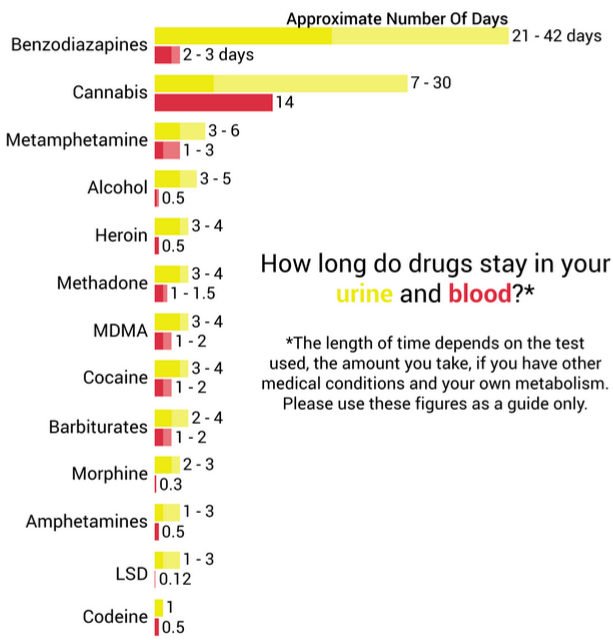This Image Proves Why Drug Tests Make No Sense
By:
We've explained plethora of reasons drug tests are inane, discriminatory, expensive, and generally ineffective. But a simple, straightforward chart on Dadaviz last week drove home the more salient reason why drug testing is ineffective: the tests rely on wildly variant time-in-system metrics, and disproportionately target some of the least serious drugs, which coincidentally tend to stay in the system the longest.
Presuming that the tests are known about or at least expected, they're also easy to beat. With that in mind, as well as the fact that recent research has shown them to be ineffective in deterring drug use [in high school students, at least], their existence can seem more like an expensive and lazy method for employers to have at least some assurance on paper that the people they hire aren't addicts.
 @LeonMarkovitz/Dadaviz - dadaviz.com
@LeonMarkovitz/Dadaviz - dadaviz.com
As the chart shows, the length different drugs stay in the system can vary on a person's usage, metabolism, and other contributing factors. But generally, it would be safe to say that if an employer had scheduled a drug test for a new employee, that person could theoretically use meth a week prior with no consequences. But a person who smoked a joint a month before and had remained completely sober since then could be in hot water (assuming the test is urine-based).
Even with these inconsistencies, drug tests remain an expensive prerequisite for many jobs. In 1999, the American Civil Liberties Union issued a report, which was highlighted by ATTN: in June:
"Drug testing programs are expensive. In one year, 38 federal government agencies spent $11.7 million on drug testing. The annual cost of drug testing to the aviation industry is approximately $14 million. Texas Instruments, one of America's largest electronics manufacturing companies, reports spending $1 million to test 10,000 workers – about $100 per employee."
